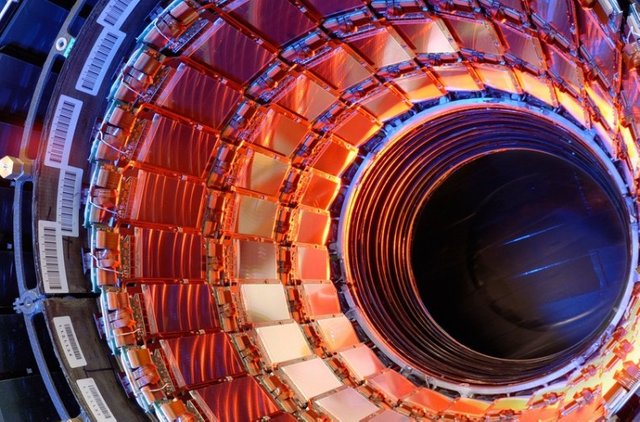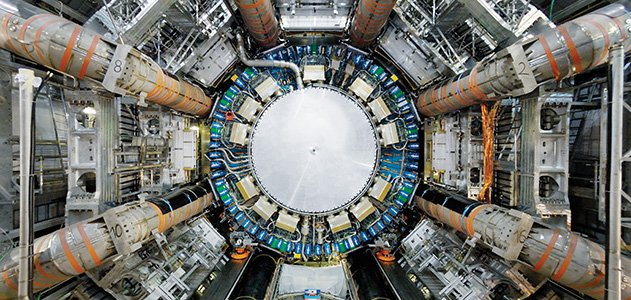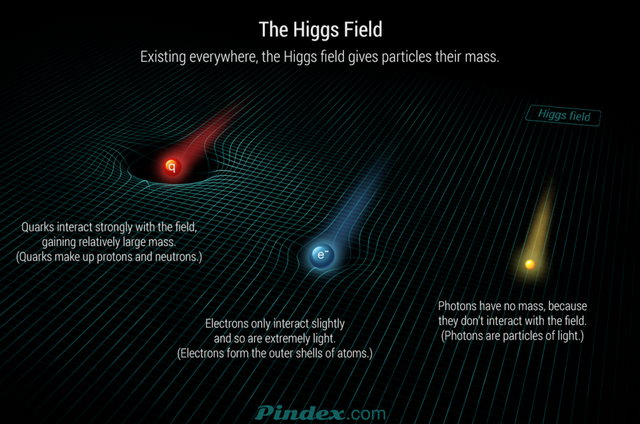The ‘GOD Particle,’ What is it?
Hello Steemians!! Today I bring my new post on "The ‘GOD Particle,’ What is it?". In this topic I have covered the new ideas that are being debated around the world. Please go through it to know more about it.

Where did everything come from? This is perhaps the biggest mystery that science has been striving to answer for decades, if not centuries – how the universe came to be. Mankind’s most curious minds have been yearning to figure out what it is exactly that keeps the universe going as it does now and what is behind the creation of potentially millions of planets and clusters of stars residing within many galaxies.
Over the years, various theories have been presented by men and women of science that seek to explain what it is that governs all forms of matter and energy and why these things behave the way they do. With so many of these postulations, it has become a major objective of the scientific field of physics to perhaps combine all existing theories and laws about the universe and unify them into a single and cohesive “theory of everything.”

Let me explain.
Science in general, and physics in particular, seek patterns. Stretch a spring twice as far, and feel twice the resistance. A pattern. Increase the volume an object occupies while keeping its mass fixed, and the higher it floats in water. A pattern. By carefully observing patterns, researchers uncover physical laws that can be expressed in the language of mathematical equations.
A clear pattern is also evident in the case of a compass: Move it and the needle points north again. I can imagine a young Einstein thinking there must be a general law stipulating that suspended metallic needles are pushed north. But no such law exists. When there is a magnetic field in a region, certain metallic objects experience a force that aligns them along the field’s direction, whatever that direction happens to be. And Earth’s magnetic field happens to point north.

Scientists keep smashing things together to try to find the smallest particle that exists. They found quarks, the building blocks of protons and neutrons that exist in everything around you, with Murray Gell-Mann’s discovery, and some postulate that scientists working at CERN, near Geneva Switzerland, are looking for the ‘God Particle,’ but will the latest discovery of two new exotic particles that appeared inside the Large Hadron Collider (LHC) change everything, or nothing at all?
In 2012, physicists at CERN discovered evidence of the Higgs boson. The what? The Higgs boson is one of two types of fundamental particles, and it’s a particular game-changer in the field of particle physics, proving how particles gain mass. Using the Socratic method, CERN physicists Dave Barney and Steve Goldfarb explain the exciting implications of the Higgs boson.
Collecting data using the Large Hadron Collider officially begun in early 2010, with ATLAS and CMS – two of the main teams in particle detection at LHC – tasked to pinpoint with accuracy and precision the mass range where the Higgs boson could exist. The two teams worked independently from the other, refraining from discussing their work outside of their respective groups. It was only around the end of 2011 that the two team leaders met with the director general of CERN. It was then revealed that each team held suspicions that they may have finally found the Higgs boson, having narrowed down its mass at around 125 GeV.
By July 2012, CERN announced that the ATLAS and CMS experiments at the Large Hadron Collider resulted to the discovery of a new boson particle with the mass range of 125 and 126 GeV. Both independent experiments reached a local significance of 5 sigma – the conventional standard observed in particle physics before a discovery is officially declared. This meant that there was only one chance out of 3.5 million that each of the discoveries of the ATLAS and CMS teams was nothing more than a random fluctuation.
It would take months of further studies before CERN would confirm with some degree of confidence that the new particle they discovered could potentially be the Higgs boson, which they did so in March 2013. By October of that same year, Peter Higgs and Francois Englert were awarded the Nobel Prize in Physics for coming up with the theory that led to the discovery of a new fundamental particle and for furthering the current understanding of subatomic particles and their mass.

References :
TEXT SOURCE: Link
TEXT SOURCE: Link
TEXT SOURCE: Link
TEXT SOURCE: Link
I hope you enjoyed learning about "The ‘GOD Particle,’ What is it?". If you love dreaming and learning science then please follow me, @adi-mac

If you are interested in various domains of Science and Mathematics then join the @steemstem project, team to support high quality STEM (Science,Technology, Engineering and Mathematics) related contents. Join them in steemit.chat to interact with the science authors from all over the world.

I thank @nitesh9 and @rocking-dave for the creation and rights to use the steemSTEM images and gifs presented throughout this post.
Thank you for reading my content !!

Congratulations @adi-mac! You have completed some achievement on Steemit and have been rewarded with new badge(s) :
Click on any badge to view your own Board of Honor on SteemitBoard.
For more information about SteemitBoard, click here
If you no longer want to receive notifications, reply to this comment with the word
STOP